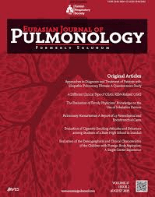
Eurasian Journal of Pulmonology
Scope & Guideline
Advancing respiratory health through innovative research.
Introduction
Aims and Scopes
- Epidemiology and Disease Patterns:
The journal emphasizes studies on the epidemiology of respiratory diseases, including tuberculosis, COPD, and COVID-19, aiming to reveal patterns and trends that can inform public health strategies. - Innovative Clinical Assessments:
Research on clinical assessment tools, such as scoring systems, exercise tests, and imaging techniques, is a key focus, highlighting methodologies that improve patient evaluation and management. - Therapeutic Interventions and Outcomes:
The journal covers studies on various therapeutic approaches, including pharmacological treatments, rehabilitation techniques, and novel interventions, providing insights into their efficacy and safety. - Comorbidities and Multidisciplinary Care:
It addresses the interplay between respiratory diseases and other health conditions, advocating for a multidisciplinary approach to patient care. - Patient Quality of Life and Mental Health:
There is a growing focus on the impact of respiratory diseases on patients' quality of life and mental health, reflecting a holistic approach to pulmonary care.
Trending and Emerging
- Impact of COVID-19 on Lung Health:
There is a notable increase in research related to COVID-19, including its long-term effects, management strategies, and implications for patients with pre-existing pulmonary conditions. - Telemedicine and Remote Care:
With the rise of telehealth, studies exploring remote assessments and tele-pulmonary rehabilitation are gaining traction, highlighting innovations in patient care delivery. - Long-term Sequelae of Respiratory Infections:
Emerging research focuses on the long-term consequences of respiratory infections, such as pulmonary fibrosis following COVID-19, emphasizing the need for ongoing monitoring and management. - Personalized and Precision Medicine:
The journal is seeing an increase in studies that explore personalized treatment approaches for lung diseases, utilizing biomarkers and genetic profiling to tailor interventions. - Mental Health in Respiratory Disease Management:
There is a growing emphasis on understanding the psychological impact of respiratory illnesses, leading to research on anxiety, depression, and overall mental well-being in affected patients.
Declining or Waning
- Traditional Therapeutic Approaches:
Research on conventional treatments for respiratory diseases, such as standard pharmacotherapy protocols, appears to be waning as newer, innovative therapies gain attention. - Basic Pathophysiology Studies:
There seems to be a reduced emphasis on purely mechanistic studies of lung diseases, as the field shifts towards translational research that connects basic science with clinical application. - Occupational Lung Diseases:
The frequency of studies specifically addressing occupational lung diseases has decreased, possibly overshadowed by the urgent focus on infectious diseases and the pandemic.
Similar Journals
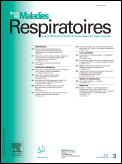
REVUE DES MALADIES RESPIRATOIRES
Advancing knowledge in pulmonary health.REVUE DES MALADIES RESPIRATOIRES is a distinguished journal published by MASSON EDITEUR, focusing on the vital field of pulmonary and respiratory medicine. Established in 1984, this journal has become a prominent platform for sharing innovative research and clinical findings, reflecting an impressive array of studies that contribute to our understanding of respiratory diseases. With its ISSN 0761-8425 and E-ISSN 1776-2588, it facilitates access to scholarly work within the medical community, although it currently operates under a subscription model rather than Open Access. As indicated by its quartile ranking of Q4 in 2023 within its category and a Scopus rank of #128/155, REVUE DES MALADIES RESPIRATOIRES serves as an essential resource for researchers, professionals, and students aiming to stay informed about advancements in respiratory health. This journal plays a crucial role in fostering discussions that drive innovation and best practices in the treatment and understanding of respiratory conditions.

Lancet Respiratory Medicine
Exploring new horizons in respiratory medicine.The Lancet Respiratory Medicine, published by Elsevier in the United Kingdom, is a premier journal dedicated to the field of pulmonary and respiratory medicine. With its impressive impact factor and a prestigious ranking of #1 out of 155 in its category as of 2023, it holds a remarkable position in advancing research and clinical practices in respiratory health. The journal invites original research, reviews, and clinical studies that aim to propel the understanding of respiratory diseases, fostering innovations in treatment and management strategies. Operating under a Q1 category in Scopus rankings, it is an essential platform for researchers, healthcare professionals, and students who are committed to enhancing patient care and advancing knowledge in this crucial area of medicine. The Lancet Respiratory Medicine remains a vital resource for the latest findings and discussions shaping the future of respiratory health.
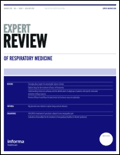
Expert Review of Respiratory Medicine
Advancing Respiratory Health Through Expert InsightsExpert Review of Respiratory Medicine is a leading journal published by Taylor & Francis Ltd, dedicated to advancing the field of respiratory medicine through evidence-based research and comprehensive reviews. With a robust ISSN of 1747-6348 and an E-ISSN of 1747-6356, the journal disseminates essential insights into pulmonary and respiratory health, ranking an impressive #33 in Medicine - Pulmonary and Respiratory Medicine on Scopus, reflecting its significant contribution to this discipline. Established in 2007 and extending its reach through 2024, Expert Review of Respiratory Medicine serves as a crucial resource for professionals and researchers dedicated to improving respiratory health outcomes. Though not designated as an open-access journal, its impactful articles are pivotal in shaping clinical practices and guiding future research in respiratory medicine and related fields, including public health and immunology. By engaging with this journal, readers can stay abreast of the latest developments and critically evaluate advancements in respiratory care.

ERJ Open Research
Pioneering Discoveries in Pulmonary MedicineERJ Open Research is a distinguished Open Access journal dedicated to advancing the field of pulmonary and respiratory medicine, published by the European Respiratory Society Journals Ltd. Established in 2015, the journal proudly provides a platform for innovative research and comprehensive studies that address vital questions in respiratory health. With an impressive Q1 ranking in Scopus for Pulmonary and Respiratory Medicine and positioned in the top 73rd percentile among its peers, ERJ Open Research is a critical resource for researchers, clinicians, and students alike. The journal’s commitment to open access ensures that high-quality research is readily available to the global community, fostering collaboration and knowledge-sharing. Whether you are looking to publish groundbreaking findings or stay updated on the latest advancements in respiratory medicine, ERJ Open Research is the premier destination for impactful scholarly contributions.

Thoracic Research and Practice
Advancing Thoracic Health Through Innovative ResearchThoracic Research and Practice is an emerging open access journal published by AVES that aims to advance knowledge in the field of pulmonary and respiratory medicine. Launched in 2022, this journal aspires to provide a platform for innovative research, clinical practices, and advancements in thoracic health. With an E-ISSN of 2979-9139, it caters to a global audience while based in Turkey. Although it currently holds a Q4 category in the 2023 ranking within its field, the journal is dedicated to improving its standing through the inclusion of high-quality, original articles, systematic reviews, and case studies. As it converges years from 2023 to 2024, Thoracic Research and Practice invites researchers, professionals, and students to contribute valuable insights that aim to enhance patient outcomes and propel further exploration in this critical area of medicine.

Tuberkuloz ve Toraks-Tuberculosis and Thorax
Bridging research and practice in respiratory medicine.Tuberkuloz ve Toraks (Tuberculosis and Thorax) is a distinguished journal published by the TURKISH ASSOCIATION OF TUBERCULOSIS AND THORAX located in Turkey. Serving as a pivotal platform for researchers and practitioners in the fields of Critical Care, Intensive Care Medicine, and Pulmonary and Respiratory Medicine, this journal has been disseminating vital research since 2003 and is committed to advancing knowledge and clinical practices related to tuberculosis and thoracic diseases. Although currently not an Open Access publication, its relevance is underscored by its rankings within Scopus, including a Q3 category in Critical Care and Intensive Care Medicine and a Q4 in Pulmonary and Respiratory Medicine, reflecting its significant contributions to the academic community. With a mission to foster the exchange of innovative ideas and encourage rigorous scholarly discourse, Tuberkuloz ve Toraks plays an essential role in addressing pressing health challenges associated with respiratory ailments and remains an invaluable resource for researchers, health professionals, and students dedicated to improving outcomes in thoracic health.
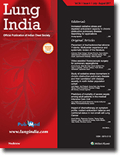
Lung India
Connecting researchers and clinicians for impactful findings.Lung India is a premier open-access journal dedicated to the dissemination of high-quality research in the field of Pulmonary and Respiratory Medicine. Published by Wolters Kluwer Medknow Publications, it has been forging a path in respiratory healthcare since its inception in 2004. With its impactful contributions to clinical practice and research, Lung India holds a solid position in the academic landscape, evidenced by its ranking in the Q3 quartile for Pulmonary and Respiratory Medicine as of 2023, and its Scopus rank of #99 out of 155. The journal is particularly important for researchers, clinicians, and students in India and beyond, providing a platform for the latest findings and developments in respiratory care, lung disease management, and innovative treatment methods. With a commitment to accessibility, Lung India aims to promote knowledge sharing among professionals and support the advancement of respiratory health. The journal is well-equipped to cater to a diverse audience, ensuring that vital research is readily accessible and impactful.

Pulmonology
Exploring the frontiers of respiratory health and innovation.Pulmonology, an esteemed journal published by Elsevier, serves as a vital platform for advancing knowledge in the field of Pulmonary and Respiratory Medicine. Since its transition to Open Access in 2018, this journal has successfully fostered a global readership, allowing for unrestricted dissemination of cutting-edge research. With an impressive Scopus ranking of #8 out of 155 in its category and a notable 2023 Q1 status, Pulmonology consistently showcases high-quality studies and reviews that contribute to the understanding and treatment of respiratory disorders. Authors and readers alike benefit from its commitment to publish influential research that addresses contemporary challenges in lung health. By bridging the gap between theory and clinical practice, the journal paves the way for innovative practices in pulmonology, making it an indispensable resource for researchers, healthcare professionals, and students interested in this dynamic field.

Zeitschrift fur Pneumologie
Advancing Lung Health Through Innovative ResearchZeitschrift für Pneumologie is a pivotal journal in the field of Pulmonary and Respiratory Medicine, published by Springer Heidelberg, a renowned name in academic publishing. With its ISSN number 2731-7404, it serves as a vital platform for disseminating innovative research and clinical studies relevant to lung health and diseases. This German-based journal aims to bridge the gap between research and practice, encouraging submissions that advance knowledge in respiratory medicine, including pathophysiology, treatment modalities, and patient care strategies. Although currently categorized in the Q4 quartile within its field, its commitment to quality research and emerging insights positions it as an essential resource for researchers, healthcare professionals, and students dedicated to improving respiratory health. The journal operates within the convergence period from 2022 to 2024, promising a dynamic evolution of its content. With limited open access availability, it encourages readership and contribution from its audience, fostering a collaborative academic environment.
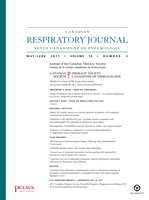
Canadian Respiratory Journal
Innovating respiratory medicine with cutting-edge research.The Canadian Respiratory Journal is a prominent peer-reviewed publication dedicated to advancing knowledge in the field of pulmonary and respiratory medicine. Published by HINDAWI LTD and based in Egypt, this journal has been an Open Access platform since 1994, ensuring broad dissemination of vital research findings to a global audience. With an ISSN of 1198-2241 and an E-ISSN of 1916-7245, the journal plays a significant role in shaping respiratory health discussions, evidenced by its 2023 category rankings of Q2 in Medicine (miscellaneous) and Q3 in Pulmonary and Respiratory Medicine. The journal consistently publishes high-quality research, reviews, and clinical guidelines that resonate with practitioners, researchers, and students alike. It serves as an essential resource for those seeking to stay at the forefront of developments in respiratory health, reflecting its commitment to enhancing practice and informing policy while recognizing its place in this vital medical field.